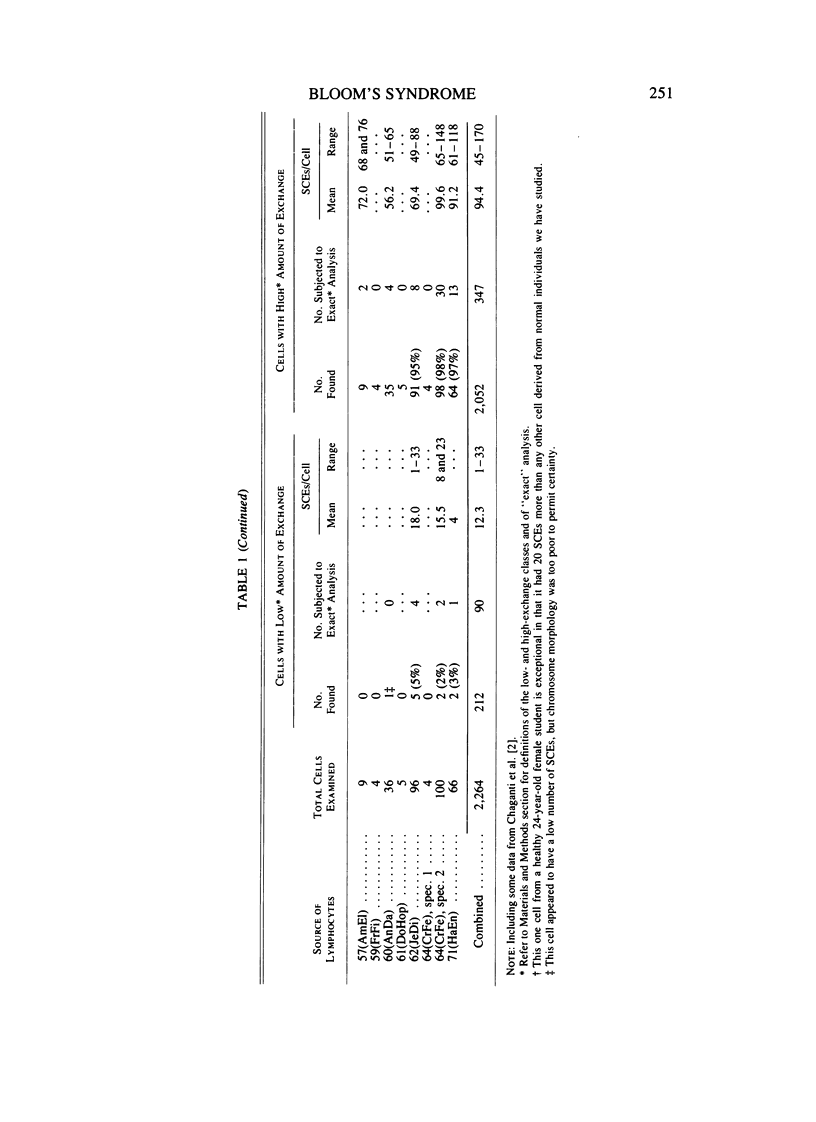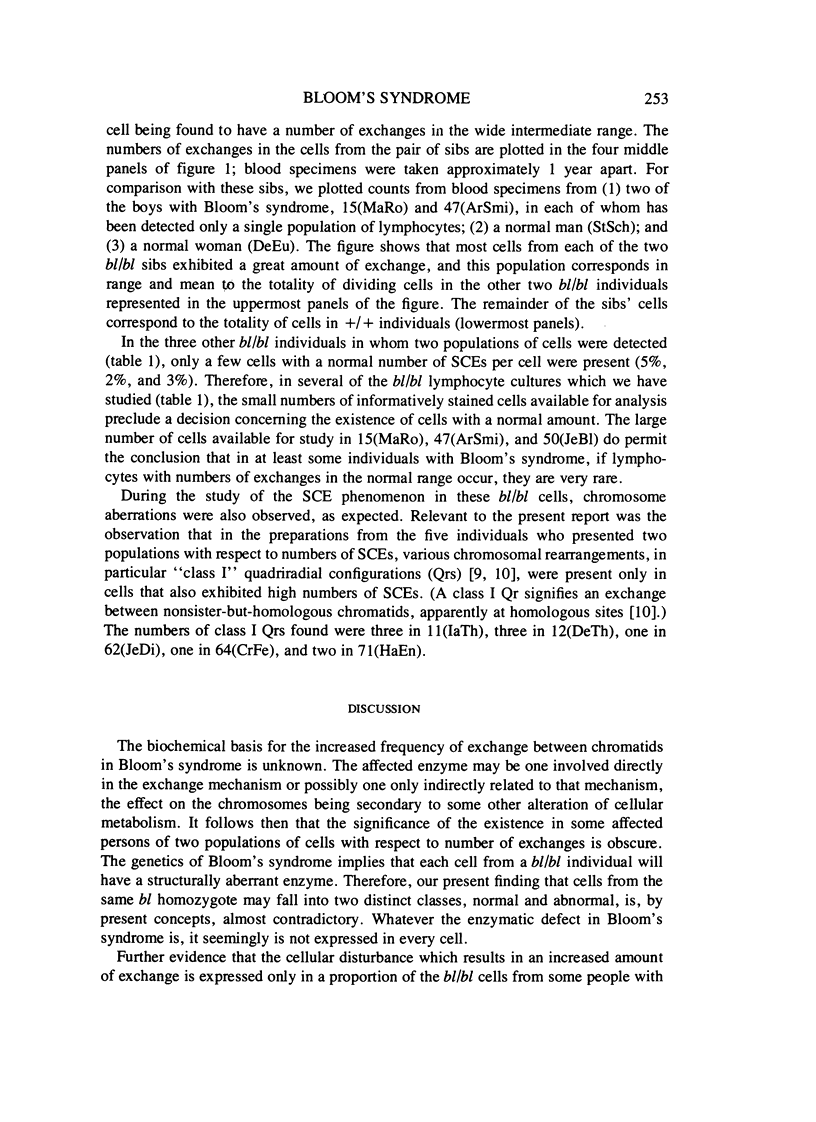Abstract
An abnormally great amount of exhange between both sister and nonsister-but-homologous chromatids is a highly characteristic feature of cultured blood lymphocytes from individuals with Bloom's syndrome. However, a population of lymphocytes which exhibit a normal amount of exchange can be detected in the blood of some individuals with this syndrome. This coexistence of cells with a greatly increased number of sister-chromatid exchanges and others with a normal number results in a phenotypic dimorphism, in apparent contradiction to the autosomal recessive mode of inheritance of the syndrome.
Full text
PDF







Selected References
These references are in PubMed. This may not be the complete list of references from this article.
- Bartram C. R., Koske-Westphal T., Passarge E. Chromatid exchanges in ataxia telangiectasia, Bloom syndrome, Werner syndrome, and xeroderma pigmentosum. Ann Hum Genet. 1976 Jul;40(1):79–86. doi: 10.1111/j.1469-1809.1976.tb00166.x. [DOI] [PubMed] [Google Scholar]
- Chaganti R. S., Schonberg S., German J. A manyfold increase in sister chromatid exchanges in Bloom's syndrome lymphocytes. Proc Natl Acad Sci U S A. 1974 Nov;71(11):4508–4512. doi: 10.1073/pnas.71.11.4508. [DOI] [PMC free article] [PubMed] [Google Scholar]
- GERMAN J. CYTOLOGICAL EVIDENCE FOR CROSSING-OVER IN VITRO IN HUMAN LYMPHOID CELLS. Science. 1964 Apr 17;144(3616):298–301. doi: 10.1126/science.144.3616.298. [DOI] [PubMed] [Google Scholar]
- German J. Bloom's syndrome. I. Genetical and clinical observations in the first twenty-seven patients. Am J Hum Genet. 1969 Mar;21(2):196–227. [PMC free article] [PubMed] [Google Scholar]
- German J., Crippa L. P., Bloom D. Bloom's syndrome. III. Analysis of the chromosome aberration characteristic of this disorder. Chromosoma. 1974;48(4):361–366. doi: 10.1007/BF00290993. [DOI] [PubMed] [Google Scholar]
- Latt S. A. Microfluorometric detection of deoxyribonucleic acid replication in human metaphase chromosomes. Proc Natl Acad Sci U S A. 1973 Dec;70(12):3395–3399. doi: 10.1073/pnas.70.12.3395. [DOI] [PMC free article] [PubMed] [Google Scholar]
- Marsh W. L., Nichols M. E., Oyen R., Whitsett D. C., Ethridge E. L. Inherited mosaicism affecting the ABO blood groups. Transfusion. 1975 Nov-Dec;15(6):589–595. doi: 10.1046/j.1537-2995.1975.15676082235.x. [DOI] [PubMed] [Google Scholar]
- Nichols W. W. Somatic mutation in biologic research. Hereditas. 1975;81(2):225–236. doi: 10.1111/j.1601-5223.1975.tb01037.x. [DOI] [PubMed] [Google Scholar]
- Perry P., Wolff S. New Giemsa method for the differential staining of sister chromatids. Nature. 1974 Sep 13;251(5471):156–158. doi: 10.1038/251156a0. [DOI] [PubMed] [Google Scholar]
- Shiraishi Y., Freeman A. I., Sandberg A. A. Increased sister chromatid exchange in bone marrow and blood cells from Bloom's syndrome. Cytogenet Cell Genet. 1976;17(4):162–173. doi: 10.1159/000130710. [DOI] [PubMed] [Google Scholar]
- Sperling K., Goll U., Kunze J., Lüdtke E. K., Tolksdorf M., Obe G. Cytogenetic investigations in a new case of Bloom's syndrome. Hum Genet. 1976 Jan 28;31(1):47–52. doi: 10.1007/BF00270398. [DOI] [PubMed] [Google Scholar]


